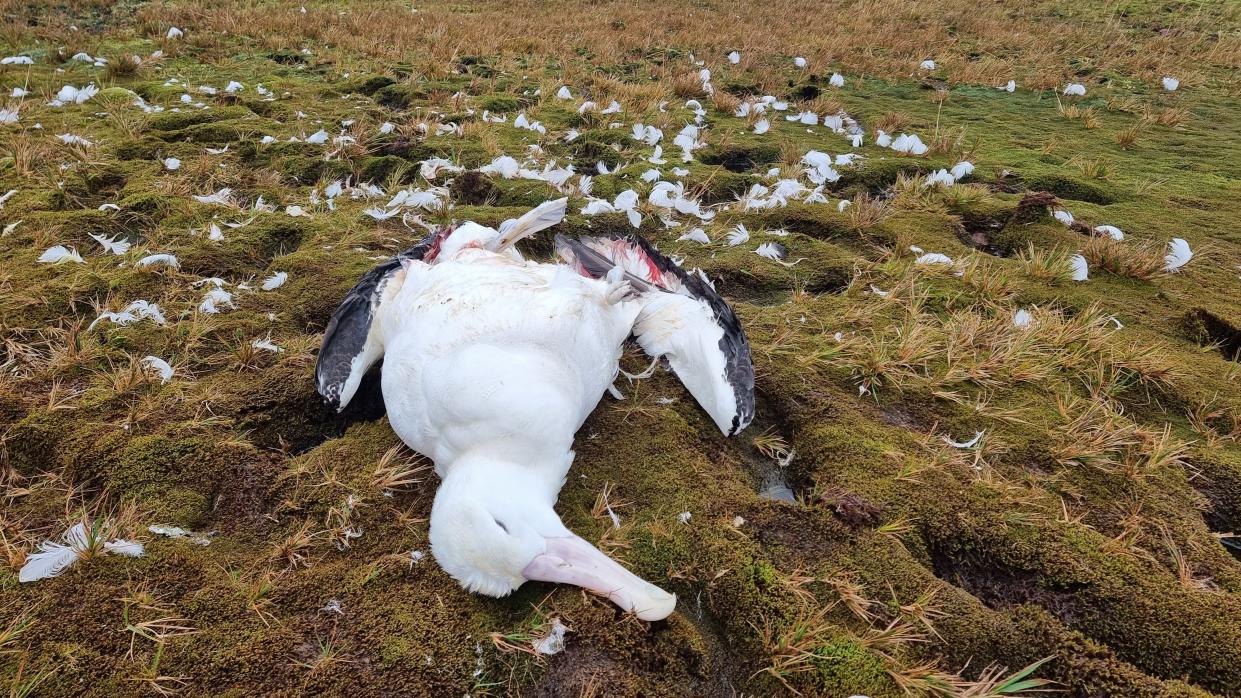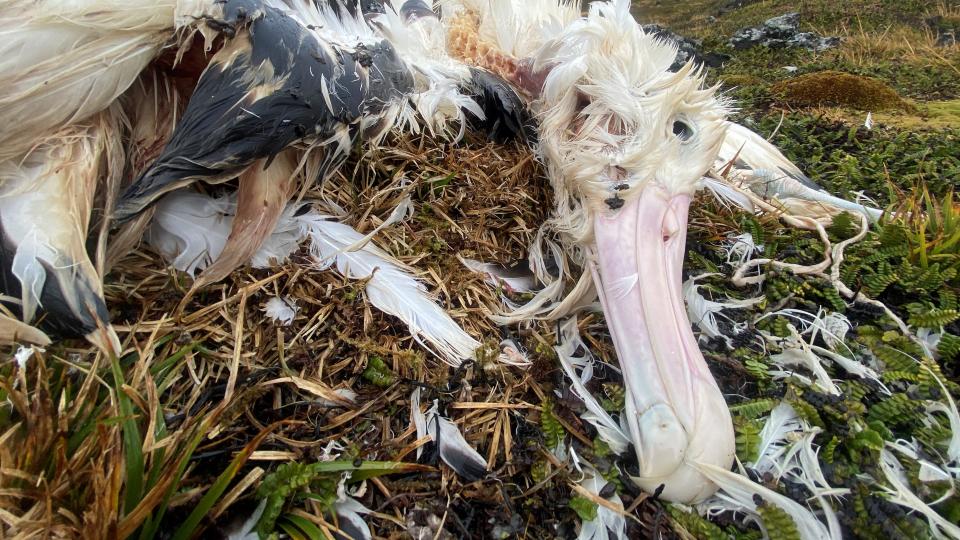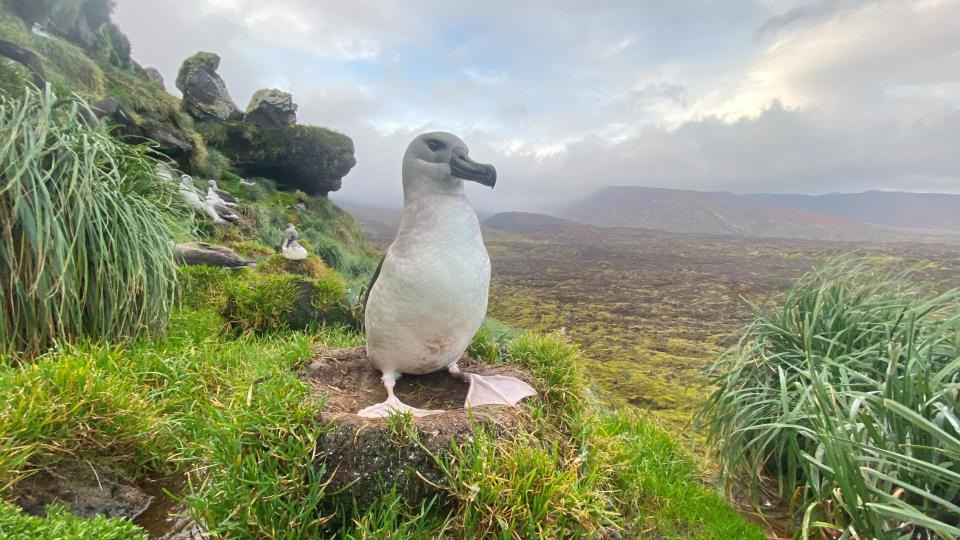Adult albatrosses found gnawed to death by mice on 3rd remote island


Adult albatrosses on a remote island are being attacked and eaten by an aggressive invasive species — mice.
Invasive mice have been wreaking havoc on the ecosystem of Marion Island — located about halfway between South Africa and Antarctica — for decades, chowing down on native invertebrates and the chicks of many seabirds that breed there. But the latest discovery is the first time they've been documented attacking adult albatrosses on the island.
"If the mice are starting to attack the adults, that's becoming really problematic," Maëlle Connan, a researcher at Nelson Mandela University in South Africa, told Live Science.
At 115 square miles (298 square kilometers), Marion Island is about half the size of Chicago but is home to an impressive array of wildlife, including king penguins, elephant seals and seabirds like wandering albatrosses (Diomedea exulans), one of the world's largest flying birds. The island wasn't home to any non-marine mammals until about the 19th century, when house mice (Mus musculus) were introduced by humans via ships.

Since then, mice have decimated many of the invertebrates and plant species that live there. But in recent decades, the local mouse population has boomed, likely as a result of warmer and drier weather due to climate change.
As the mouse population has grown, so has their appetite — and in 2003, researchers discovered that the mice had started eating the chicks of wandering albatrosses on the island.
Related: Mice caught attacking adult albatross in gruesome video
Now, it seems the mice have begun feasting on adult birds. In April, researchers found the bodies of eight adult wandering albatrosses that had died within weeks of each other.
The carcasses showed evidence of mouse attacks, such as wounds on their elbows, Connan said. News of this discovery was first reported in Nature Africa. Blood patterns suggest the injuries were inflicted while the birds were still alive, the report said.
Wandering albatrosses have a 10-foot (3 meters) wingspan so are significantly bigger than mice, but they evolved to live on islands without any mammalian predators and have no defense mechanisms against the invasive rodents, Anton Wolfaardt a seabird researcher with The Mouse-Free Marion Project told Live Science. The project is an initiative of the South African government and the nonprofit organization BirdLife South Africa.

It's not clear exactly how the albatrosses died, but it could have been due to infection from the mouse bites or even starvation if the birds were too injured to go out to sea and find food, Wolfaardt said. Long-term, this predation could have a significant impact on the global wandering albatross population — about a quarter of which lives on Marion Island.
Mice have also recently been observed attacking adult albatrosses in other seabird hotspots, such as Tristan albatrosses (Diomedea dabbenena) on Gough Island in the South Atlantic and Laysan albatrosses (Phoebastria immutabilis) on Midway Atoll in the Pacific. That's a worrying trend for this threatened group of birds — of the 22 species of albatross worldwide, nine are listed as endangered or critically endangered.
RELATED STORIES
—Male mice are terrified of bananas. Here's why.
—An 'absolute plague' of mice is ravaging eastern Australia
—10 of the biggest birds on Earth
On Marion, there's a plan to fight back. The Mouse-Free Marion Project is planning to spread rodenticide all over the island, which the conservationists hope will kill off all the mice, Wolfaardt said.
The local native seabirds mostly look for food in the ocean, and the native invertebrates aren't affected by rodenticide, he said, so this technique would only target the invasive mice living on the island. If it's successful, the Marion Island ecosystem may finally start to heal.
"Once those introduced predators, invasive species, are removed," Wolfaardt said, "you can really then kind of start the process of turning back the clock."

